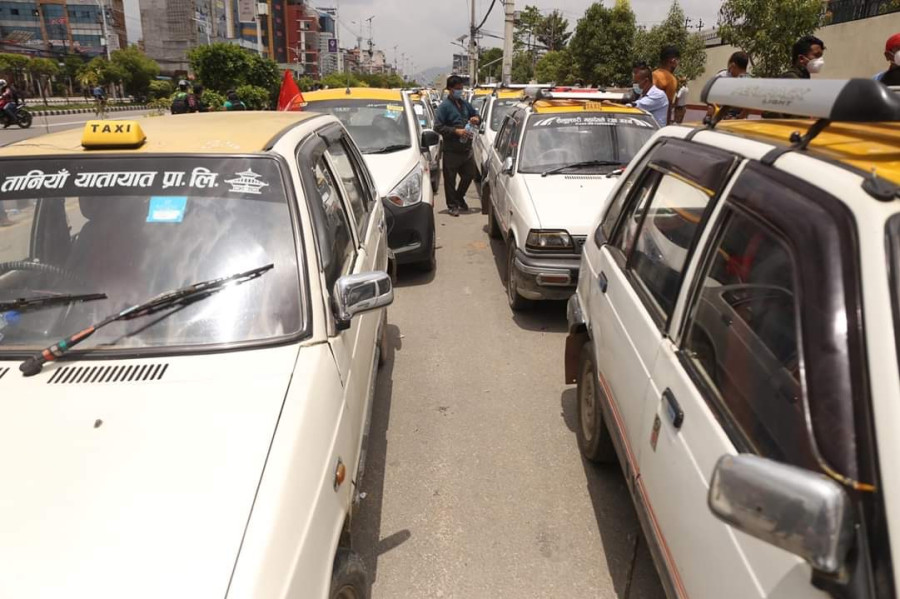Editorial
Drive home a solution
The government must either let taxi drivers return to work or help them financially.
It's been nothing short of a double whammy for taxi drivers this pandemic season. On the one hand, the nationwide lockdown imposed to contain Covid-19 has left them unable to feed their families well. And on the other, many of them have hefty sums of bank loans to repay. Those who live in rented tenements are in even bigger trouble. There are over 12,000 taxis and twice as many drivers in Kathmandu Valley alone. That is a huge number of hardworking citizens rendered jobless and unable to sustain themselves for over three months owing to situations beyond their control. But the government continues to be oblivious to their plights. The disgruntled drivers who have finally started to drive their taxis are being stopped by traffic personnel, leading to a cat-and-mouse race between them.
So it was no surprise when, on Tuesday, hundreds of taxi drivers demonstrated outside the Department of Transport Management Office, Minbhawan, demanding that the government allow them to go back to work. Some of them have stationed there itself, unwilling to disperse unless their grievances are addressed. Their demands include relaxation on bank interest and government taxes until the pandemic is over, extension of loan repayment deadlines, provision of safety equipment for themselves and their passengers during rides, and formation of a committee to formulate guidelines for operating taxis during the pandemic.
The demands sound quite reasonable. And the government can’t ignore them any longer. If it can’t support them financially, it can at least begin a phasewise easing of restrictions on the operation of the taxis. But while doing so, it must come up with stringent protocols to ensure the safety of passengers and drivers. In several Indian cities, ride-hailing platforms such as Uber and Ola resumed services after the government eased the lockdown. But they have had to follow enhanced safety measures on every single trip to ensure the safety of riders as well as drivers. The measures include compulsory mask usage for drivers and riders, sanitisation of cars post-trip, and allowing only two passengers per ride. They also allow drivers and riders to cancel the trips if the other party does not adhere to the safety measures.
Although Nepal’s taxi services are not as organised, the government and the representatives of taxi drivers can sit together and come up with the best possible ways to ensure that drivers are able to earn their bread on their own again even as they follow standard safety procedures. As such, taxi drivers are not the only working class people staring at bankruptcy at the moment. The government must, without further ado, come up with solid plans to accelerate the pace of the economy even as we try to avert mass-scale transmission of the virus. Importantly, the government must be clear-eyed about whether to circumvent the pandemic or take it head-on. That’ll help it better respond to the demands of every sector in the country that is in the doldrums due to the virus outbreak.




 9.12°C Kathmandu
9.12°C Kathmandu












%20(1).jpg&w=300&height=200)

